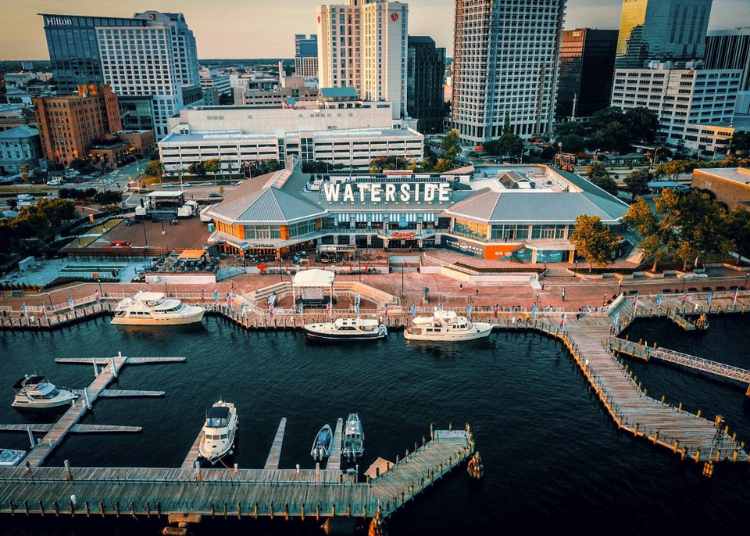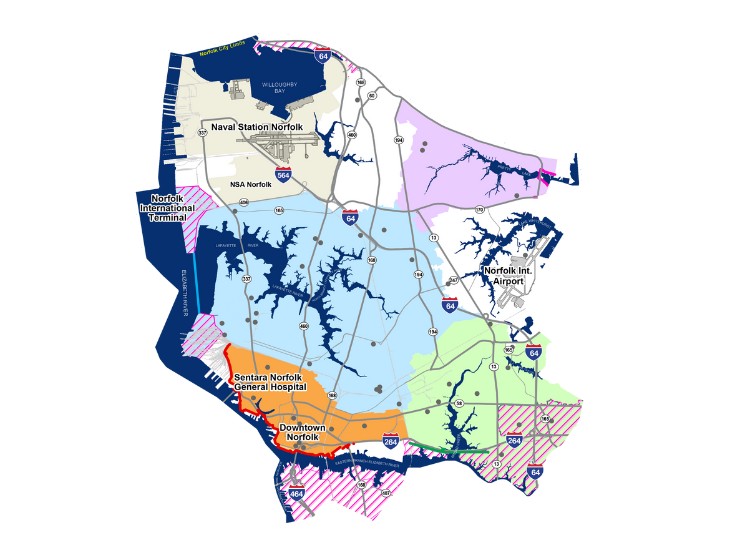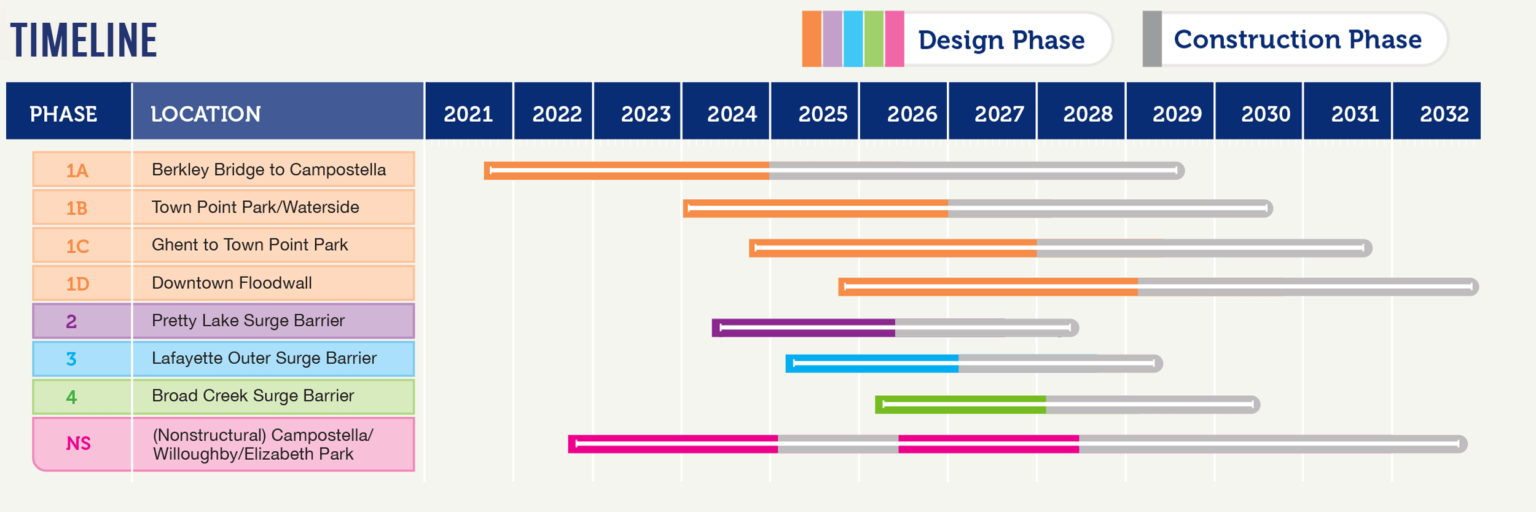AECOM, in collaboration with Moffatt & Nichol and Volkert, has been chosen by the City of Norfolk, Virginia, to deliver program and project management services for its $2.6 billion Coastal Storm Risk Management (CSRM) Program.
AECOM will act as the managing partner of the Norfolk Resilience Partners JV, a team of experts dedicated to enhancing Norfolk’s infrastructure resilience and safeguarding it from coastal flooding and severe storm events as part of the Army Corps of Engineers (USACE) initiative.
Norfolk’s Coastal Storm Risk Management (CSRM) Program - Program Details
The city of Norfolk faces an escalating threat of flooding and damage caused by coastal storms. It grapples with one of the highest rates of relative sea level rise (RSLR) among Atlantic coastal communities.
The Coastal Storm Risk Management (CSRM) Project has focused on mitigating the city’s vulnerability to coastal flooding and destruction resulting from nor’easters, hurricanes, and other significant storm events.

The Norfolk Coastal Storm Risk Management Study has proposed a comprehensive strategy that encompasses structural, property-specific, and natural and nature-based features, including:
- Structural Coastal Storm Risk Management Measures: These are human-made solutions designed to combat coastal flooding issues, such as tidal surge barriers and floodwalls/levees.
- Property-Specific, Nonstructural Improvements: These measures concentrate on minimizing damage from flooding rather than preventing flooding itself. They encompass enhancements to commercial structures, home elevations, and basement fills.
- Natural and Nature-Based Features: These are designed to work with or restore natural processes with the goal of weakening waves and reducing storm surges. Examples include the creation of oyster reefs, living shorelines, and wetlands mitigation.
This multifaceted approach aims to fortify Norfolk’s resilience against coastal storm risks and enhance its capacity to withstand the impacts of climate change.
Norfolk’s Coastal Storm Risk Management (CSRM) Program - Program Phases
The $2.6 Billion program will be delivered in five phases, detailed in the table and picture below.
Phase | Description |
Phase 1 – Downtown (Highlighted in Orange Below) | Flood risk mitigation system including floodwalls with a levee, surge barriers, and natural features. Connects Ghent through downtown to Ohio Creek Watershed project. |
Phase 2 – Pretty Lake (Highlighted in purple below) | Implementation of floodwalls and storm surge barriers to prevent storm surge from entering Pretty Lake, particularly at Shore Drive. |
Phase 3 – Lafayette (Highlighted in Blue below) | Deployment of floodwalls and storm surge barriers to reduce storm surge entry at Shore Drive, focusing on the Pretty Lake area. |
Phase 4 – Broad Creek (Highlighted in Green Below) | Combines floodwalls, storm surge barriers, and tide gates to mitigate storm surge from entering Broad Creek, especially at I-264. |
Phase 5 – Non-structural (Purple Hatched areas) | Involves property-specific flood mitigation projects such as home elevations, basement fills, and floodproofing. Spanning multiple areas including Berkley, Campostella, Elizabeth Park, Ingleside, NIT, and Willoughby. |

Norfolk Resilience Partners JV - Scope of Works
Under the single-award contract, Norfolk Resilience Partners, comprising AECOM, Moffatt & Nichol, and Volkert, will provide a range of services, including:
- program and project management,
- engineering and design,
- real estate services, public engagement,
- utility coordination,
- environmental and cultural resources assessments and compliance,
- grant management,
- and more.
The primary objective of the joint venture is to enhance and prioritize Norfolk’s infrastructure to withstand climate changes and safeguard against coastal storm risks for the long term, all while preserving the city’s coastal living environment.
As detailed above, this initiative encompasses the development of a comprehensive system featuring floodwalls with levees, surge barriers, nature-based elements, tide gates, pump stations, and non-structural components like home elevations, basement fills, and floodproofing measures.














